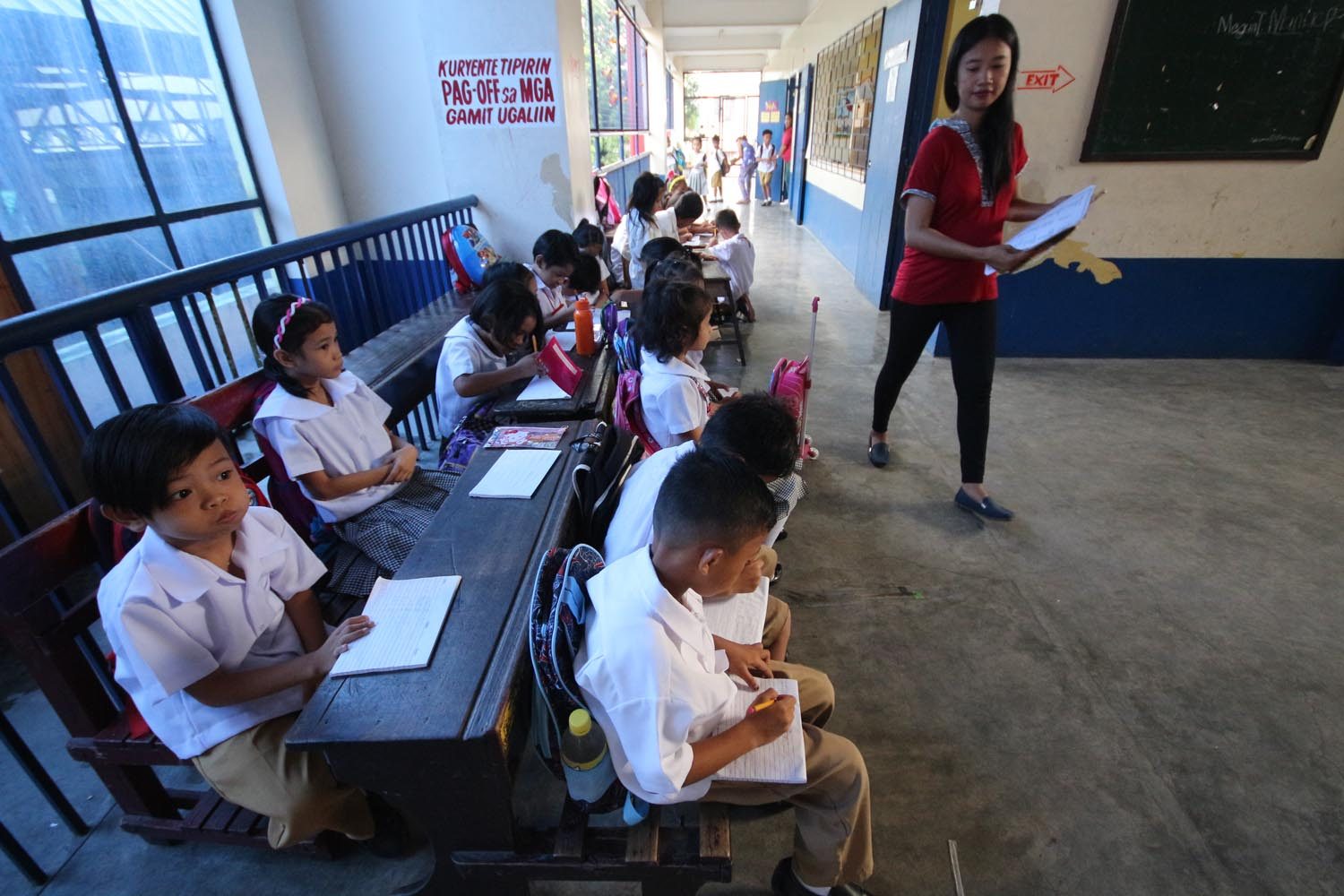SUMMARY
This is AI generated summarization, which may have errors. For context, always refer to the full article.

MANILA, Philippines – Shortage in classrooms is still a problem in Philippine public schools despite the Department of Education’s (DepEd) ever-increasing yearly budget.
Education Secretary Leonor Briones acknowledged the shortage and attributed it to the “unavoidable increase in enrollment every year,” while Education Undersecretary Jesus Mateo said more classrooms are needed “because of the drive to meet lower class size, which leads to conducive learning.”
Benjie Valbuena, the national chair of the Alliance of Concerned Teachers-Philippines (ACT-Philippines), pegged the classroom shortage in the country at 113,995.
Mateo said around 50,000 of these 113,000 needed classrooms have been completed already, but completion doesn’t necessarily mean they can be used immediately.
In Metro Manila, there is still a shortage of over 18,000 classrooms, according to Education Undersecretary Alain Pascua.
“18,058 classrooms is our total shortage in Metro Manila, and this is computed based on ideal situation [of] one shift, [with] 40 to 45 students per classroom,” Pascua said in a press conference on Monday, June 5.
Briones pointed out that the shortage in the National Capital Region (NCR) is due to a lack of “buildable space.”
The education secretary said they are considering different solutions to address this perennial problem, including the construction of school communities outside urban centers.
“We are considering eventually, maybe in the near future, na mag-build tayo ng mga school communities outside urban centers, i-bus na lang ang mga bata,” Briones said on Monday.
(We are considering eventually, maybe in the near future, to build school communities outside urban centers and bring the children to school using buses.)
The idea of public schools using buses is not new. In 2014, Rappler reported about an effort in Valenzuela City to decongest a school by transporting students from a crowded public elementary school to another school that has room for more students.
The other alternative, according to Briones, is to build high-rise school buildings.
“[That] would necessitate cooperation and generosity of [local government units]. Maraming dagdag sa cost, ang mga safety features, etcetera. Iisipin din natin ‘yung environment, kung masyadong masikip,” she explained.
(That would necessitate cooperation and generosity of local government units. There will be additional costs, and safety features, etcetera. We would also have to think about the environment, if it’s too crowded.)
‘Creative’
Pascua said there is a need to “re-plan” government’s school building strategy in Metro Manila.
“We have 700 schools in Metro Manila. [Ang] kulang natin sa isang eskwelahan ay isang malaking building (What we lack in one school is one huge building) that can accommodate…25 classrooms. A 4-story high [building] with 6 classrooms in every floor – that’s how big we need in every school in Metro Manila in order to complete the ideal situation,” he explained.
Since the lack of spaces is still a problem in Metro Manila’s public schools, education officials have to make do with the usual solutions for now: splitting classrooms into two and employing double shifting of classes.
“Ang aming instruction, ‘pag nakukulangan ng classrooms, we make use of all the available rooms, we prioritize the use of rooms as classrooms, instructional rooms. [On a] worst case scenario, ‘yung principal office [gagamitin] pansamantala, kung kinakailangan,” DepEd-NCR Director Ponciano Menguito.
(Our instruction to schools is if we lack classrooms, we make use of all the available rooms, we prioritize the use of rooms as classrooms, instructional rooms. On a worst case scenario, we use the principal’s office for the meantime, if needed.)
Briones said educators in Metro Manila are “very creative about dealing with these shortages.”
Public elementary and high schools nationwide opened their doors to 22.89 million students on Monday, June 5. – Rappler.com
Add a comment
How does this make you feel?
There are no comments yet. Add your comment to start the conversation.